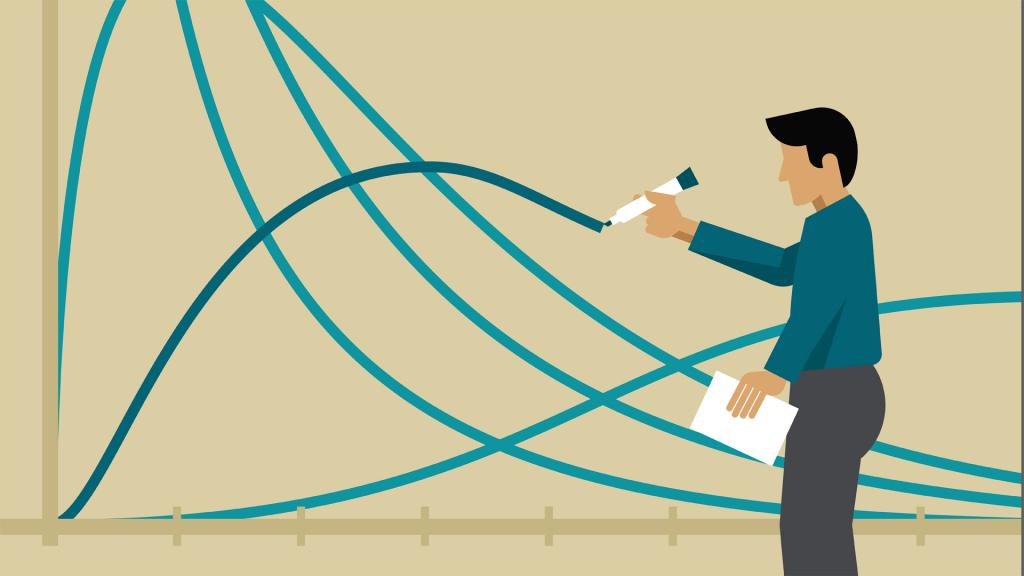What is statistics? This is a set of investigated phenomena, facts and processes, which involves the division into stages and relationships with other information blocks. Statistical observation is the collection of information, which lies in the registration of facts and signs that characterize each unit of the studied population. The forms of statistical observation will be described in detail below.
What is a statistical observation?
An observation in the field of statistics is a collection of information that consists in recording facts and signs that characterize each unit of the studied population. Information about each observation element is the result of statistical accounting. This is primary information. According to the results of statistical observation, a set of primary information is formed.
Any form of statistical observation should be a systematic, systematic and based on scientific principles work on the formation of mass data on the processes and phenomena of socio-economic life by registering the basic features of the developed program, which was formed in advance.
It should also be noted that the forms and types of statistical observation should be based on the principles of consistency, regularity and scientific validity.
Program
The formation of a monitoring program incorporates a number of critical programmatic and methodological issues. For example, how it is required to set goals and objectives of observation, how to determine the object of observation and its boundaries, how to set the units of observation, how to make a list of signs for the characteristics of the unit of observation, etc. Also, you should be especially careful when choosing methods, forms, types and methods for organizing observation.

What is the object of any form of statistical research? This is a collection in which individual elements are included - units of observation. Information on them should be obtained according to the results of the survey.
The content of the aggregate forms of statistical measurement
The purpose of the survey is to determine all subsequent actions and stages for conducting statistical observation. The goal is formed on the basis of the main hypotheses and potential results of the study being implemented. Concrete tasks are determined by those groups of information that should be acquired in the process of observation.

So, the statistical process of data collection includes many units of observation. These are the elements of the object that are carriers of the main features collected during the statistical observation. It should be noted that there can be several similar units. So, at a census not only a name with a surname is considered. The forms of state statistical observation also included family, household, age, and other important information.
Unit
The unit in the observational process is called the element of the object of observation, which absorbs a number of features collected in the process of statistical observation. It should be noted that there are several observation units. You can make out each of them on the example of such a thing as "enterprise". It has complete information about all operations of an economic nature. However, in some cases, data is required that relate to organizational units. In interstate practice, the following units are included here:
- units of a certain type of activity.This is an enterprise or a share of some enterprise that deals mainly with one type of production. It accounts for most of the gross value added that this unit creates.
- Local unit. This is an enterprise or some part of it that carries out production. It can consist of one or more types of activity, in one geographically isolated place.
- Institution. This is an enterprise or some part of it, which implements mainly one type of activity in only one place. It accounts for most of the gross value added that the establishment creates. It turns out that this part of the value added corresponds to the local unit.
Do not confuse the unit of aggregate with the unit of statistical. The latter is closely related to the forms of organization of statistical observation. This is a real existing legal or natural person from whom you can get the necessary information during the observation process.
Accounting unit
Reporting (accounting) unit is called the subject, which researchers can contact for information about the unit of observation. They are also responsible for sending primary data. In observations, the reporting unit is the same as the observation unit. For example, according to the form of statistical observation, Form 1 “On the production and shipment of services and goods” is provided by an enterprise, thereby being considered a reporting unit. It should be borne in mind that the data contained in the form are related to the production and shipment of goods of the same enterprise.

If we talk about the organizational forms of statistical observation, namely, about a special program, then most often it is understood as a set of features by which it should be characterized as a separate observation unit. Signs well reflect the properties of such units. They can be attributive, that is, in the form of text, and quantitative - that is, expressed in numbers.
The first rule of Quetelet
Guidelines for completing statistical observation forms were developed two hundred years ago. At that time, the famous Belgian mathematician Adolf Ketle was engaged in statistics. He developed three simple rules that allow you to quickly develop, verify and change the basic forms of statistical observation.
The first requirement says that only those questions that require clear answers to solve the assigned tasks are included in the statistical monitoring program. It turns out that any indicators that need to be obtained “just in case” are immediately excluded, that is, without a clear understanding of their actual need.
Modern statisticians call this rule "nothing for the future." Quite often, sociological polls, which are conducted at a time, commit a violation of this kind.
The second rule of Quetelet
The following thesis of the Belgian scientist concerns issues that do not need to be included in the observation program. According to rule 2, the forms of statistical observation will be complete only when the persons conducting the survey get rid of questions of unsatisfactory quality. These include those questions that will certainly receive answers of the same quality. According to Ketle, it’s useless to ask people about average income for a year for two reasons: ordinary citizens feel bad or simply don’t want to reveal their real profit. Plus, an error is considered quite probable.
It turns out that according to the second rule, people should give a qualitative answer to a qualitatively formulated question.
The third rule of Quetelet
According to the latest thesis of the Belgian mathematician, it is important enough for the formation of an array of data to include in the program those questions that can cause some distrust of the subjects under study about the goals of statistical research.

A similar rule sets out a fundamental provision on the trust of respondents, without which it would simply be impossible to collect statistical data on the totality of units. This rule underlies the basic principle of organizing statistics called “confidentiality”.
It should be noted that such a principle is a postulate in all laws and regulations around the world. In Federal Law-282 of 2007, it is indicated that the data contained in the statistical forms are information of limited access. The exception is, perhaps, limited access information.
Preparing to get statistics
Organizational preparation of observation lies in a number of rather important points. Here's what to highlight here:
- calculation of costs for the implementation of monitoring;
- determining the time and place where the observation will be carried out;
- determination of the primary information carrier, development and preparation of such a carrier;
- conducting preparatory work with respondents (at least they should be warned about the upcoming survey);
- training for the performance of the survey;
- detailed calculation of the costs of implementing the observation.

Each of the indicated points should be performed with maximum accuracy. Maximum attention should be paid to the guidelines for completing statistical observation forms.
Observation time
The statistics distinguish between objective and subjective time during which the observation occurs. The time of an objective type is the segment to which the observer's information relates. Such a time characterizes the period for which the collection and registration of characteristics of the population occurs. For example, these are data on output, salary or consumption.

Subjective time is the time of direct observation. During this period of time, all necessary information must be collected.
Observation forms: reporting
A little more detail should deal with the main forms of statistical observation. Form 1 is reporting. This is the basic document that lies in the statistical authorities receiving data from observation units. The data itself is sent to statistical bodies from enterprises and organizations in the form of mandatory activity reports.
In addition to Form 1, federal statistical monitoring suggests many other options. This is, for example, specially organized observation. It is necessary to obtain information that is simply not included in the reporting.

Another point is the register observation. It is based on the maintenance of a statistical register, with the help of which it is possible to implement continuous accounting for long-term processes with a fixed beginning, a certain stage of development, and a fixed ending.
There are also many other forms of federal statistical monitoring. Instructions on such forms are in the local acts of each enterprise.
Form 1-PRIB
A fairly good example in the field of studying statistics is the 1-PSD form. This is a form of federal state statistical monitoring. This is a state document on citizens who arrive in Russia. Instructions for filling out federal statistical monitoring forms are given by special order of the Federal State Statistics Service. It is noted here that the form itself must be completed by persons who are responsible for receiving and issuing a special package of documents for registration. Filling out the federal statistical observation form is carried out by a special official. It checks all the lines of the form for correct completion, and then passes it to the exact address.
The document must contain the address part, the line "Postal address", a place to fill in the data on liability, the code part of the form and some other parts of the document.
Observation errors
In the list of the most popular errors that may occur during the execution of a document, two groups should be distinguished. The first includes registration errors. They represent deviations between the value of the indicator that was obtained during the statistical observation.The actual value of this indicator is also taken as a basis. Registration errors are systematic and random. Random errors are the result of random factors - such as mess with strings. Systematic violations occur from time to time, one might say, regularly.
The next group includes representativeness errors. They arise when the selected population is not well capable of reproducing the original population.
According to another classification, among other errors, random and systematic shortcomings should be distinguished.
